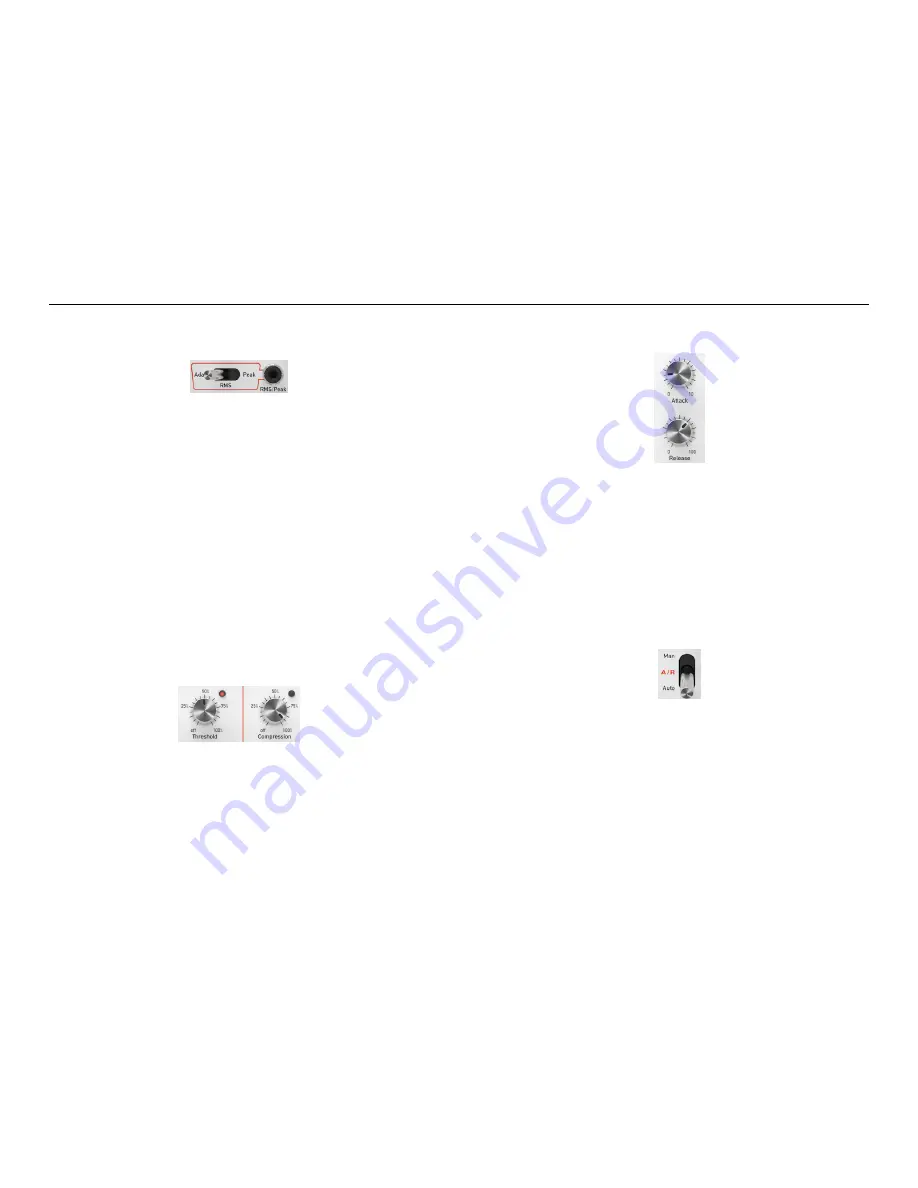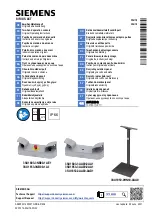
6.4
Attack and Release
6
DEVICE OVERVIEW
6.2
Signal Detection
The level detection could be set via the switch into one of three modes. In the
left and middle positions an averaging approach will used called RMS (root
mean square).
The RMS modes are producing a smooth level detection. The left position
(Adapt) will use an adaptive circuit and the middle position a static averaging
factor. Just try both modes and let your ears decide.
In the right position the peaks of the input signal will be used to determine
the level instead of smoothing them by averaging. This leads to much quicker
compression which is for some type of signals favourable.
The detected signal level is available in the special
RMS/Peak
output to be used
as a CV modulation source with other modules. In principle this works much like
an envelope follower.
6.3
Compression
Compression is controlled by the classical parameters threshold and ratio.
When the detected level is above the set threshold, the signal will be lowered
in level. The more compression is dialed in, the more the level is attenuated
finally approaching the threshold level.
Compression and threshold can be each controlled via its respective CV inputs.
In this case the panel knobs will act as attenuators of the CV inputs.
6.4
Attack and Release
When the detected level reaches above threshold, then compression starts in
general as already described and ends when the level falls below the threshold.
But this is in addition managed by attack and release times. Attack means
that the compressor waits a bit after the threshold level is reached before
compression is applied. The longer attack timing is, the more transients of the
original signal are unaffected from compression.
Release timing will keep compression active for a bit longer after the level has
fallen below threshold. By these fluctuations in level will be smoothed when the
signal quickly crosses the threshold.
The
A/R
switch controls if the attack and release timing are either set auto-
matically (position ”Auto”) or manually set by the panel knobs (position ”Man”).
When using ”Auto” mode it also works well together with RMS ”Adapt” mode.
The effect of attack and release timings can be visually seen by the two LEDs:
The left LED at the
Threshold
knob will be activated when the level is above
the threshold, the right LED at the compression knob will be activated when
compression will be applied. With attack and release times as short as possible
(knobs turned to fully left in manual mode), both LEDs will light up almost simul-
taneously. When attack and/or release is increased you will see the difference
in the timing of the LEDs.
8





























